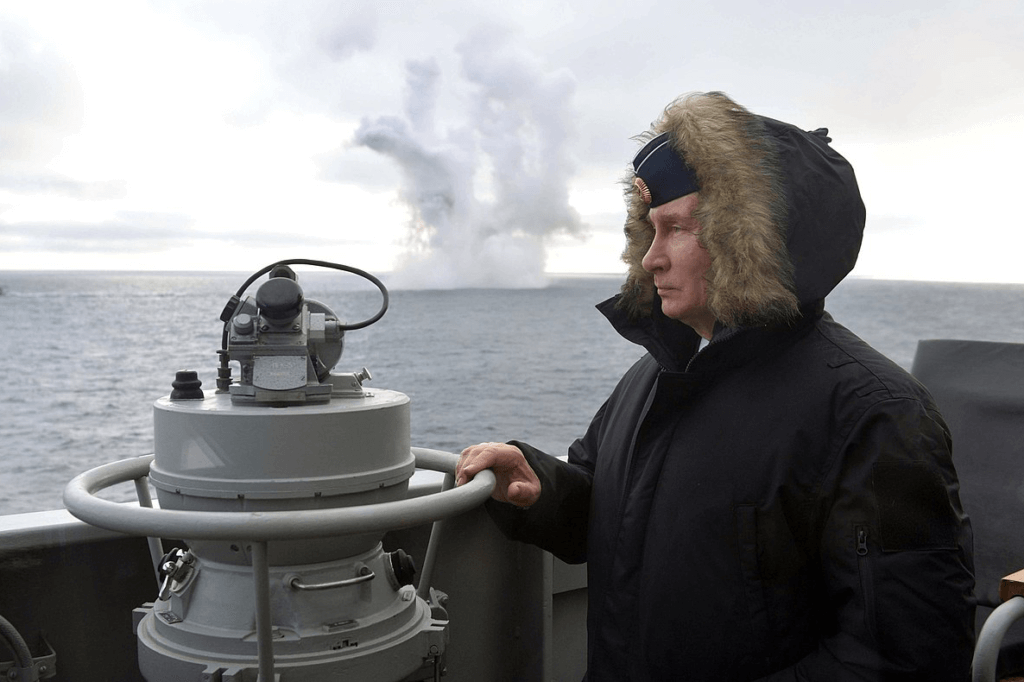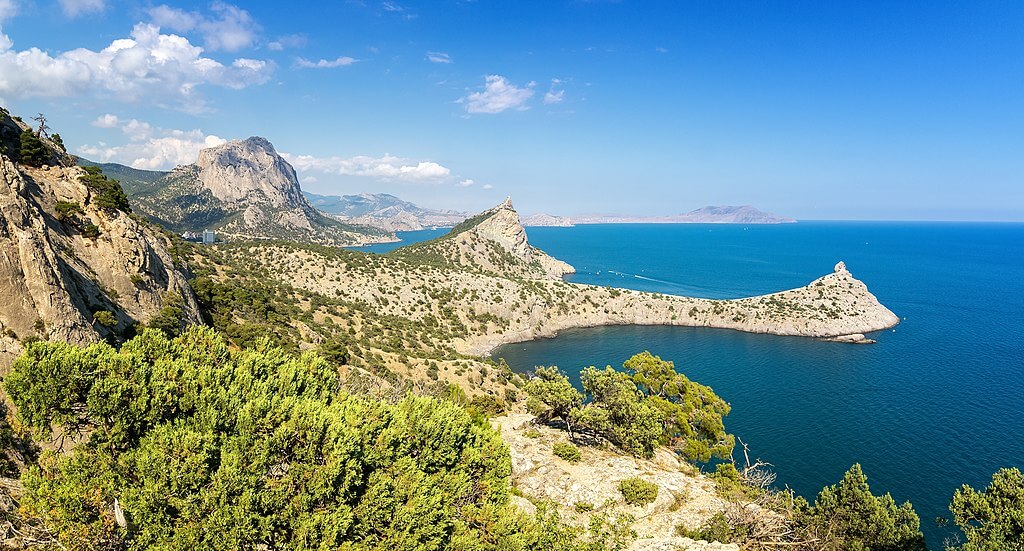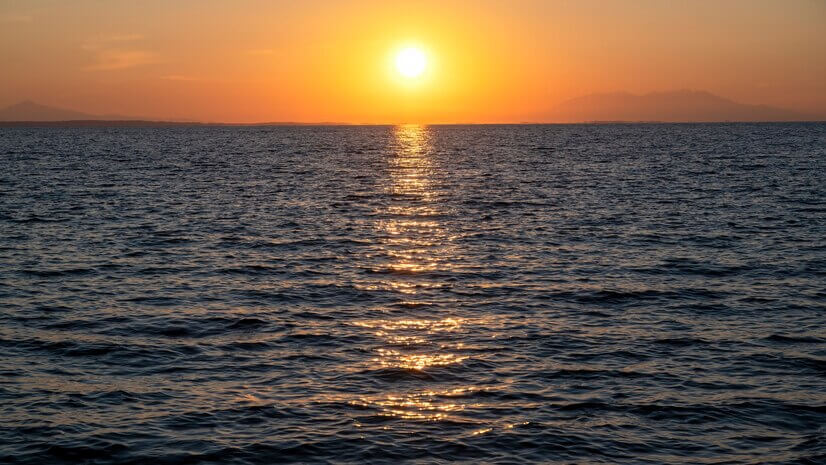
On Sunday, 11 June 2023, Russia reported that Ukraine had made an unsuccessful attempt to attack one of its naval ships using six high-speed drone boats. The targeted Russian vessel, ‘Priazovye,’ was conducting surveillance and providing security along the TurkStream and Blue Stream gas pipeline routes in the southeastern part of the Black Sea. TurkStream is a natural gas pipeline that spans from Russia to Turkey. Gazprom initiated gas transportation through TurkStream, supplying countries like Bulgaria and North Macedonia, starting from January 1, 2020. This pipeline replaced the Trans-Balkan pipeline route that went through Ukraine and Romania. On the other hand, Blue Stream is a significant trans-Black Sea gas pipeline that delivers natural gas from Russia to Turkey. The flow of gas through Blue Stream commenced in February 2003.
The Black Sea

The Russia-Ukraine war has a considerable maritime dimension which impacts global economics and security. The Black Sea is the main water body in the ongoing war. It has seen some action by Ukrainian forces which has dented the thrust of the Russian Black Sea fleet operations from Sevastopol.
Sevastopol was the primary base for the Soviet Union’s Black Sea Fleet for many years. However, when Ukraine gained independence in 1991, the Russian Navy had to relocate its headquarters to Novorossiysk, approximately 200 miles eastward. Despite this, Russia maintained leased naval facilities in Crimea, which played a significant role in the annexation of Crimea in 2014. Following the annexation, Russia returned its fleet to Sevastopol, solidifying its military presence.

This move by Russia highlighted the strategic importance of the peninsula for achieving maritime superiority in the Black Sea. Russia swiftly deployed air and coastal defence capabilities to the Crimean Peninsula, including the S400 surface-to-air missiles and the Bastion coastal defence system. By stationing these advanced long-range weapons systems, Russia expanded its anti-access and area denial capabilities, effectively covering almost the entire Black Sea, compared to the limited coverage when these systems were based further east in Russia.

The Black Sea region is also essential for NATO as it is a potential area for military operations and provides access to the Mediterranean and the Middle East. Turkey, Romania, and Bulgaria are NATO members who share the Black Sea borders with Russia, Ukraine, and Georgia. The Black Sea is a crucial waterway for international trade and maritime activity, connecting Europe to Asia and providing access to major ports such as Istanbul, Odesa, and Constanta. It is a significant transit route for oil, natural gas, and other goods and resources.
It is essential to briefly examine the other water bodies/straits of significance that impinge upon the Black Sea operations to gain a perspective on the maritime dimension of the Ukraine war. In the southwest, the Black Sea is linked to the Mediterranean via the Bosphorus Strait, the Sea of Marmara, the Strait of Dardanelles, and the Aegean Sea. In the northeast of the Black Sea, we have the Strait of Kerch, which connects to the Sea of Azov.
The Aegean Sea

Starting from the south, i.e., the access route from the Mediterranean Sea to the Black Sea, the Aegean Sea is strategically important. It is a crucial trade route connecting Europe, Asia, and Africa; therefore, it is a major shipping corridor for international trade, with numerous ports and shipping lanes facilitating the movement of goods and resources. Its geographical position has long been a source of geopolitical interest. It is a significant link between Europe, Asia, and the Middle East, influencing regional dynamics, trade relations, and political interactions. Conflicts, territorial disputes, and military posturing in the Aegean Sea can have broader regional stability and international relations implications. The Aegean Sea’s proximity to the Mediterranean and the Middle East makes it a crucial area for naval power projection. It provides access to key strategic locations and influences the ability to control maritime routes, protect national interests, and project military force.
The Dardanelles Strait

The Aegean Sea connects to the Sea of Marmara via the Dardanelles Strait, also known as the Çanakkale Strait, which is a narrow waterway that connects the Aegean Sea to the Sea of Marmara, which further leads to the Black Sea. The strait is crucial for naval vessels moving between the Mediterranean and the Black Sea. The Dardanelles Strait has been of historical and geopolitical significance due to its location. It has been a site of interest for various empires and states throughout history, given its potential for controlling and influencing trade routes, military movements, and access to the Black Sea. Control over the Dardanelles is essential for projecting naval power, protecting national interests, and ensuring access to the Black Sea for countries with a coastline along the Black Sea region.
Dardanelles Strait is a critical chokepoint for maritime trade between the Mediterranean and the Black Sea. It is an important transit route for commercial vessels carrying goods, including oil and natural gas, to and from ports in the Black Sea region. Countries with interests in the Black Sea region depend on the Dardanelles for exporting and importing energy resources, affecting their energy security. The Dardanelles Strait falls under the sovereignty of Turkey. Its control gives Turkey leverage and influence in regional affairs, including its relations with neighbouring countries and its position within international organizations like NATO. Because of its geopolitical significance, Dardanelles Strait is regulated by the Montreux Convention of 1936.
The Sea of Marmara

The Sea of Marmara connects to the Black Sea via the Bosphorus Strait, providing access to major ports such as Istanbul, Izmit, and Tekirdag. The Sea of Marmara is a vital area for military operations. It is home to several critical naval bases, and the presence of the Turkish navy in the region provides an effective defence against any potential enemy. The strategic importance of the Sea of Marmara has been highlighted by the ongoing conflict in the area and the tension between Turkey and its neighbouring countries. The control over the Bosphorus Strait, which connects the Black Sea to the Sea of Marmara, is also a significant point of discussion.
The Bosphorus Strait

The Bosphorus Strait is a narrow waterway, it is strategically important for several reasons. It is one of the busiest shipping lanes in the world, connecting the Black Sea to the Aegean Sea and the Mediterranean. The Bosphorus Strait is also the only direct link between the Black Sea and the rest of the world’s oceans, providing access to the essential ports of Istanbul and Theodosia. It is also a significant military strategic point as it allows access to the Black Sea for naval vessels, a crucial point for the Russian Navy and NATO. It is also an essential waterway for international trade as it is an important transit route for oil, natural gas, and other goods between Europe and Asia. The Bosphorus Strait is a site of historical and cultural significance, as it has been used as a transportation route for centuries and is home to several important historical and archaeological sites. Due to its strategic importance, the Bosphorus Strait is governed by the Montreux Convention, which regulates the passage of ships and sets rules for the transit of warships through the strait. However, in March 2022, Turkey invoked Article 19 of the 1936 Montreux Convention, effectively closing the Bosporus and Dardanelles Straits to Russian warships. This action came amidst the ongoing conflict between Russia and Ukraine, where the straits have gained strategic significance, the legality of the same is debatable. However, Turkey later permitted Russian warships returning to Russia to pass through its straits.
The Turkish Straits, of Bosporus and the Dardanelles, are considered internal waters of Turkey. It means the straits are landward of a maritime baseline and has water bodies like small inlets, bays, rivers, canals, harbours, and river mouths. As internal waters, these sea areas hold the same legal status as the adjacent land, granting the state the right to regulate the transit of foreign-flagged vessels within them. However, in the case of the Turkish Straits, they serve as straits used for international navigation.
The Montreux Convention guarantees free passage for merchant vessels from all nations through the Turkish Straits. Still, it imposes restrictions on the passage of warships, including a prohibition on aircraft carriers. The convention also applies different rules to states bordering the Black Sea, such as Russia and Ukraine, compared to naval vessels from states outside the region. It limits the number of warships and maximum tonnage for Black Sea states, and non-Black Sea states transiting the straits to nine ships and 15,000 tons, respectively.
The Kerch Strait

The Kerch Strait lies to the northeast of the Black Sea. It is a narrow waterway that connects the Black Sea to the Sea of Azov. It provides only access to the Sea of Azov and the ports located there, such as the Ukrainian ports of Mariupol and Berdyansk. Control of the Kerch Strait thus gives a significant advantage regarding access to these ports and the ability to block or restrict access to them.
Also Read: Ukraine Russia war : the present, past and future scenario
The ongoing Russia-Ukraine conflict has highlighted the strategic importance of the Kerch Strait as Russia’s seizing of Crimea and building of a bridge over the strait has restricted the navigation of Ukrainian ships through the strait.
The Sea of Azov

The present Russia-Ukraine crisis started in 2014 with Russia’s annexation of Crimea and the subsequent imposition of a naval blockade on Ukrainian ships in the Azov Sea, which has led to increased tensions and a build-up of military forces in the region. The situation has also led to several incidents and clashes between the Russian and Ukrainian navies, including the seizure of Ukrainian ships and the arrest of Ukrainian sailors. The maritime aspect of the conflict has also had significant economic impacts, as the Azov Sea is an important area for trade and transportation. It is the main access point for the Ukrainian ports of Mariupol and Berdyansk, which are essential for Ukraine’s steel and grain exports. It is also important for Russia as it allows control over the access of the Ukrainian navy to the Black Sea and the Crimea peninsula.
Maritime Dimension of the Ukraine War
The maritime dimension of the Ukraine war is complex and multifaceted. The Black Sea is a critical waterway for Ukraine and Russia, and its control has been a primary objective of the Russian invasion.
The Russian Navy has been conducting a campaign of missile strikes against Ukrainian ports and coastal infrastructure. These strikes have damaged or destroyed several ships and port facilities and have stopped Ukraine from exporting its goods.
The Ukrainian Navy has been fighting back and has sunk several Russian ships. The Ukrainian Navy has also been using its small boats/drone boats to conduct hit-and-run attacks on Russian forces.

The commencement of the Russia-Ukraine war led to the complete stoppage of grain export from Ukraine via the Black Sea due to the Russian blockade of Ukrainian ports and the stoppage by Russia of its own grain exports. This resulted in a scenario which would have plunged the vulnerable nations into a food crisis of humongous proportions. However, the UN and Turkey brokered the deal between Russia and Ukraine. The agreement is called ‘The Initiative on the Safe Transportation of Grain and Foodstuffs from Ukrainian ports, or the Black Sea Grain Initiative’. This deal has undergone repeated extensions, and the current period expires on 18 July 2023.
The war’s most significant impact thus far has been on maritime operations in the Black Sea and trade involving Russia. Due to the conflict and the naval blockade of Ukraine, numerous vessels were stranded in ports or at anchor and the crews faced uncertain futures. UK and EU banned Russian vessels from entering their ports, leading to the detention of ships suspected of violating sanctions.
The Russian mercantile fleet has faced restricted access to vital maritime services. Many ports have stopped providing services to Russian-owned or flagged vessels as well as to companies and agencies with Russian links. Insurers have refused to serve Russian ships.

Compliance with US and EU sanctions poses significant challenges for shipping companies and insurers. Many Western companies have voluntarily ceased trading with Russia, leading to complex and uncertain legal situations for contracts, including insurance. An expanded ban on Russian oil could increase the cost and availability of bunker fuel, potentially pushing shipowners to seek alternative fuels. (“Impact of Ukraine war on global shipping | AGCS”)
At the current juncture, it is not feasible to predict an outcome of the Russia-Ukraine conflict in the near future due to various factors like the result of the expected offensive by Ukraine, retaliation by Russia, stability of energy prices, unlikely change of regime in either country, role of Belarus, the extent of military support by NATO to Ukraine and by China to Russia, the threat of use of tactical nuclear weapons by Russia, and the thought that any further escalation could plunge the world into World War III. This leads to the view that the conflict may linger on till 2024. Nevertheless, the maritime dimension of the conflict would continue to remain significant.

